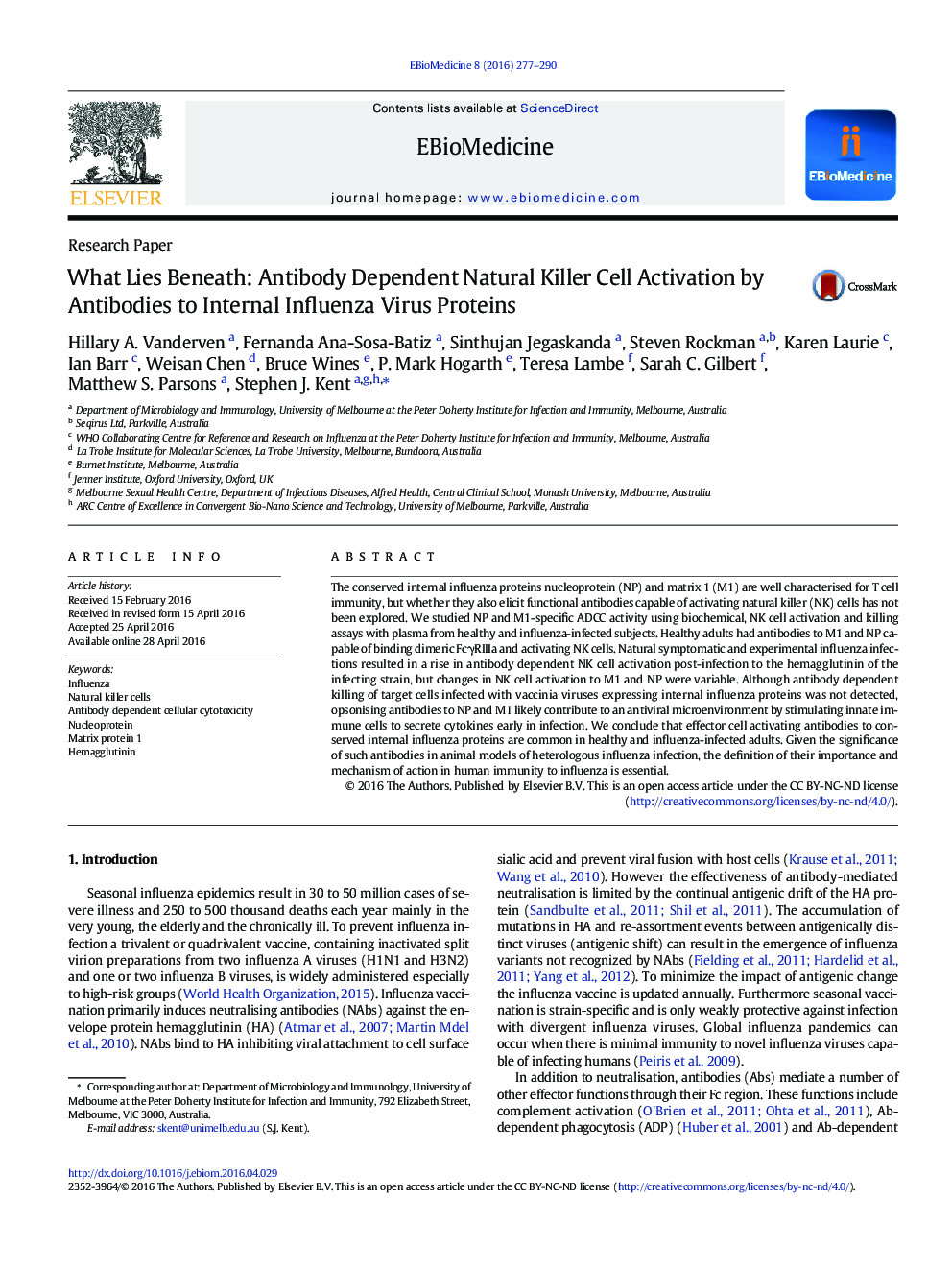| کد مقاله | کد نشریه | سال انتشار | مقاله انگلیسی | نسخه تمام متن |
|---|---|---|---|---|
| 2120771 | 1546891 | 2016 | 14 صفحه PDF | دانلود رایگان |
• Functional antibodies to influenza matrix 1 and nucleoprotein are common in healthy and influenza-infected humans.
• Opsonising antibodies to matrix 1 and nucleoprotein can bind FcγRIIIa dimers and activate natural killer cells.
• Influenza infection increased natural killer cell activation to hemagglutinin but changes to the internal proteins variedInfluenza virus causes both seasonal outbreaks and global pandemics. The current influenza vaccine provides minimal protection against divergent strains of the virus not found in the vaccine. While neutralising antibodies induced by vaccination are able to confer strain-specific protection, antibodies directed against conserved influenza proteins may be able to provide some cross-protection. Animal models suggest a protective role for anti-nucleoprotein antibodies. Exploring the functional capacity of human antibodies against internal influenza proteins to engage Fc receptors and activate innate immune cells may present a unique approach in the development of a more universal influenza vaccine.
The conserved internal influenza proteins nucleoprotein (NP) and matrix 1 (M1) are well characterised for T cell immunity, but whether they also elicit functional antibodies capable of activating natural killer (NK) cells has not been explored. We studied NP and M1-specific ADCC activity using biochemical, NK cell activation and killing assays with plasma from healthy and influenza-infected subjects. Healthy adults had antibodies to M1 and NP capable of binding dimeric FcγRIIIa and activating NK cells. Natural symptomatic and experimental influenza infections resulted in a rise in antibody dependent NK cell activation post-infection to the hemagglutinin of the infecting strain, but changes in NK cell activation to M1 and NP were variable. Although antibody dependent killing of target cells infected with vaccinia viruses expressing internal influenza proteins was not detected, opsonising antibodies to NP and M1 likely contribute to an antiviral microenvironment by stimulating innate immune cells to secrete cytokines early in infection. We conclude that effector cell activating antibodies to conserved internal influenza proteins are common in healthy and influenza-infected adults. Given the significance of such antibodies in animal models of heterologous influenza infection, the definition of their importance and mechanism of action in human immunity to influenza is essential.
Journal: EBioMedicine - Volume 8, June 2016, Pages 277–290
